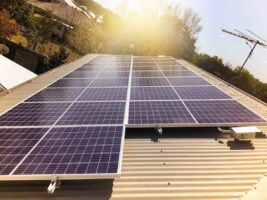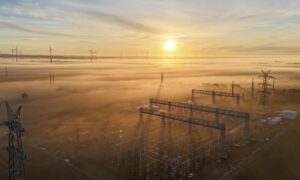
Energy Security Board chair Dr Kerry Schott has defended the modelling assumptions for the National Energy Guarantee, the controversial new policy idea put forward by the ESB and endorsed by the federal government, saying that it assumed costs at the “low end” for wind and solar.
Schott, in a webinar on Friday outlining the principles of the policy, noted that the cost of wind, solar and battery storage were falling at a “breath-taking” rate, and asserted that the ESB had assumed the “low end” of cost assumptions.
“Every time we look at them they have headed south. It seems to be best to go to the lower end” of the cost assumptions, she said.
But perhaps the ESB, and more particularly the Australian Energy Market Commission and modellers Frontier Economics, should take another look.
The technology cost assumptions (see above) do not seem to bear out reality. The assumed cost of wind is $78-$90/MWh – well above the major contracts signed for more than 1GW of wind farms (Stockyard Hill, Silverton, Cooper’s Gap) so far this year of below $60/MWh.
Likewise, the ESB modeling assumes a cost of utility-scale solar of $90-$100/MWh, well beyond the (less visible) costs of large-scale solar projects, which ARENA puts at around $70/MWh and others put slightly lower.
In the 45-minute long webinar, Schott outlined the basics of the proposed NEG to an audience of 600 people, and then answered several dozen questions. There were many more asked. (The video and webinar will be available on the ESB page of the COAG website mid next week, we are told).
What was clear from her presentation and answers was that the work of the ESB was extremely preliminary, a fact noted by its short 8-page policy outline produced with just 10 days notice.
Schott said the ESB had not yet even worked out how to define “dispatchability”, and the ESB hadn’t yet worked out what they would do about the market power of the incumbents, which many say will simply be reinforced by this new system of emission and reliability obligations and contracts.
Schott said the market power of some players – such as AGL Energy in South Australia – was a concern.
“Everyone is worried about power of large gentailers. In the South Australia market the power of AGL is an issue. We will be looking at that in due course.”
But Schott later seemed satisfied by the level of competition in other states, which appears to contradict assessments by the ACCC and the Productivity Commission, and the Thwaites Review, which all pointed to the price impacts imposed by powerful oligopolies.
Many of the criticisms of the NEG have centred on the potential for it to reinforce the market power of the big gen-tailers, which would likely serve to increase prices, rather than reduce them.
This has been the view of market analysts at Deutsche Bank, Morgan Stanley, Bloomberg New Energy Finance, ITK, and elsewhere.
Other claims made by Schott could also be considered contentious.
Schott pointed to the high level of “intermittent” energy such as wind and solar in South Australia and the level of “market intervention” by the Australian Energy Market Operator.
“AEMO is having to step in to the market to instruct generators to remain on,” she noted,
Indeed they have, since early July, and this intervention has included the curtailment of output from some wind farms when “enough” gas generation could not be found to handle high wind generation.
But since that time, South Australia – despite sourcing more than 50 per cent of its local generation from wind and solar, and instructing some gas generators to stay online when otherwise they might not – has enjoyed the lowest wholesale prices in the country, as Ross Garnaut pointed out last week.
Another contentious point from Schott was that there had been a lot of commitments to wind and solar projects in recent years, but none for “dispatchable” generation.
“What we are not seeing is any commitment at all to dispatchable generation – apart from the federal government looking at Snowy 2.0 (pumped hydro scheme),” she said.
That comment also seems to ignore recent developments, such as the Tesla big battery – 100MW/129MWh in South Australia, which is nearing completion, and numerous other projects such as:
+ The contracted 30MW/8MWh Wattle Point battery storage project next to the existing wind farm
+ The new 10MW, 5MWh battery storage project at Lakeland in Queensland, the first to combine the two.
+ The 100MW/100MWh battery storage and 120MW/600MWh of pumped hydro unveiled by Liberty OneSteel, the owner of the Whyallas steel works.
+ The significant amount of battery storage unveiled this week by DP Energy, as part of an expanded wind and solar hybrid renewable energy park near Port Augusta.
+ The proposed pumped hydro installation combined with a solar plant proposed by Genex for an old gold mine in Queensland.
+ The proposed pumped hydro facility at Cultana. The proposed 600MWh pumped hydro project in New England, and the 20MW/34MWh battery storage installation proposed for Australia’s largest greenhouse in Stawell, Victoria.
Schott answered many questions about the NEG (though unfortunately not RenewEconomy’s on some of those points above. AEMO’s Joe Adamo said responses will be published on line in coming days).
Other highlights of the webinar included:
Schott said it was unlikely that any new coal-fired generator would be built, even so-called HELE plants (so called because they claim to be “high efficiency, low emissions” – but only in comparison with the existing dirty generators).
“Lower emissions coal plants being built in Japan and discussed as proposals in Australia are actually very expensive per MW,” she said. “At present, unless someone has a major technology breakthrough, we wouldn’t anticipate seeing much more coal (even) as the (current) coal fleet retires.”
Schott said the definition of dispatchability had not been finalised – this is a crucial point for those who worry that slow, ageing coal plants may benefit from being described as “dispatchable”, when what AEMO really needs is flexible, fast response.
But Schott also said that contracts could be written with coal, gas or pumped hydro to meet the reliability obligation.
Retailers can write contracts with coal generators and with gas generators. “Both are disptachable. Coal runs pretty well all the time. Gas can run as required as retailer,” she said.
Schott provided this illustration (above) to show how the contracting might work. A retailer with a lot of coal and gas might be required to contract to buy wind or solar to meet emissions obligations.
But a retailer with a large amount of renewables will also be required to contract with coal, gas or pumped hydro to meet the reliability obligation.
“If the wind stops blowing or the sun stops shining they (retailers with high renewables) won’t have power to dispatch,” Schott said. “To make sure they have power to dispatch at all times, they will need to contract with someone with dispatchable power.”
Schott said the ESB’s dismally low forecasts of the wind and solar share by 2030 – at 18-24 per cent it is barely above anticipated 2020 levels – was a function of the federal government’s emissions reduction targets.
(We asked about the CSIRO estimate that any share of wind and solar below 30 per cent could be considered trivial, but did not yet get a response.)
How AEMO manages this will be crucial. Schott said AEMO had no incentive to require excessive amounts of dispatchable generation, but anyone remembering the organisation’s woeful forecasts on demand, which were used to justify the excessive investment in networks and gas generation, may not be comforted).
Schott acknowledged that many thought the modelled emissions targets were low, but she said the ESB did not have input on climate policy – and would not advocate – and insisted that the states would be free to set their own targets, while meeting the reliability obligation.
Schott also repeated that carbon credits could be used to meet emissions obligations, rather than building new wind or solar farms. These included the Australian based ACCU’s or international units. Clearly, much work will need to be done to ensure that this does not end up in double counting.
Schott also said the ESB assumed that energy intensive trade exposed (EITE) industries would continue to be exempt, as they are from the renewable energy target and were from the carbon price.











